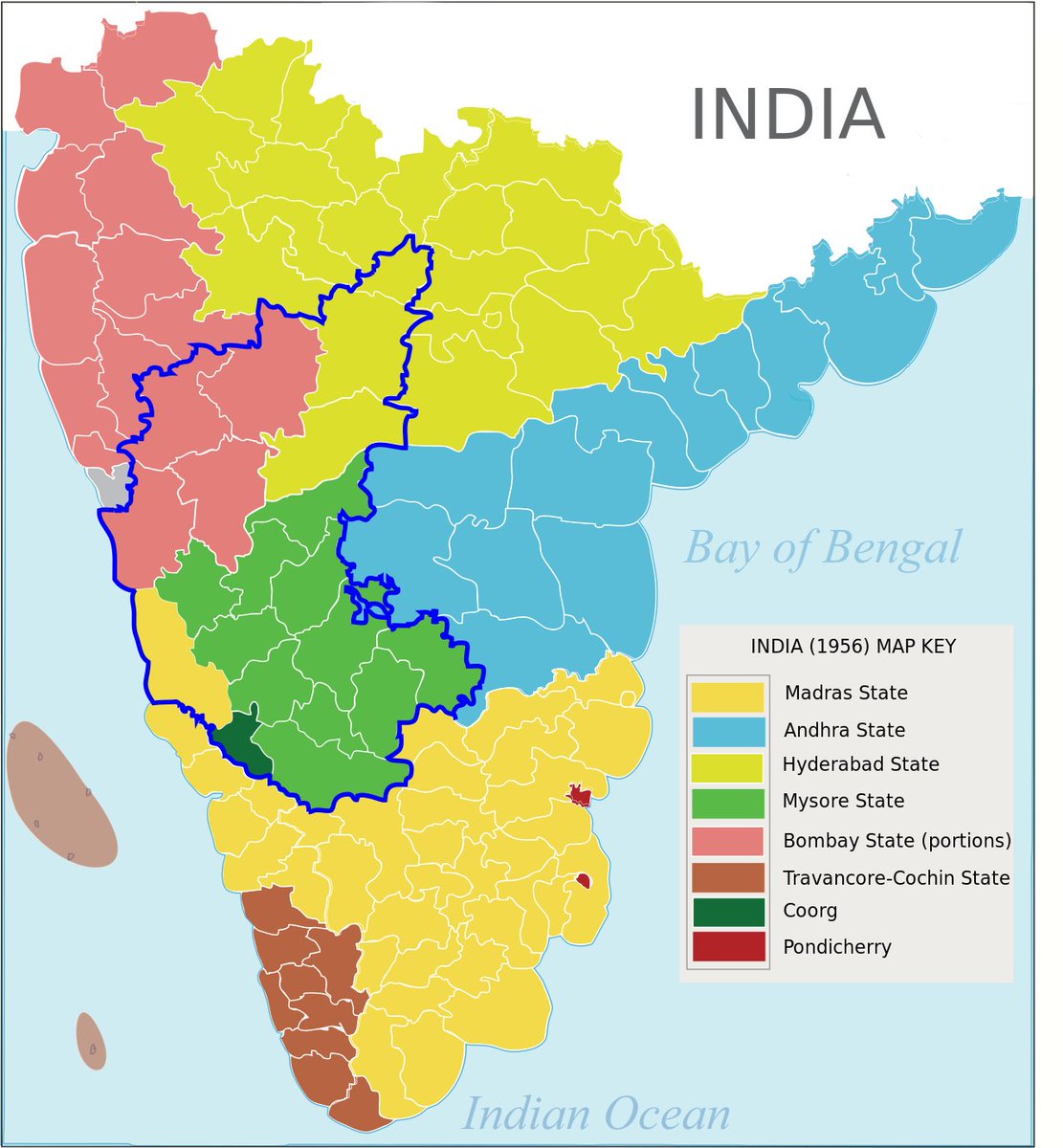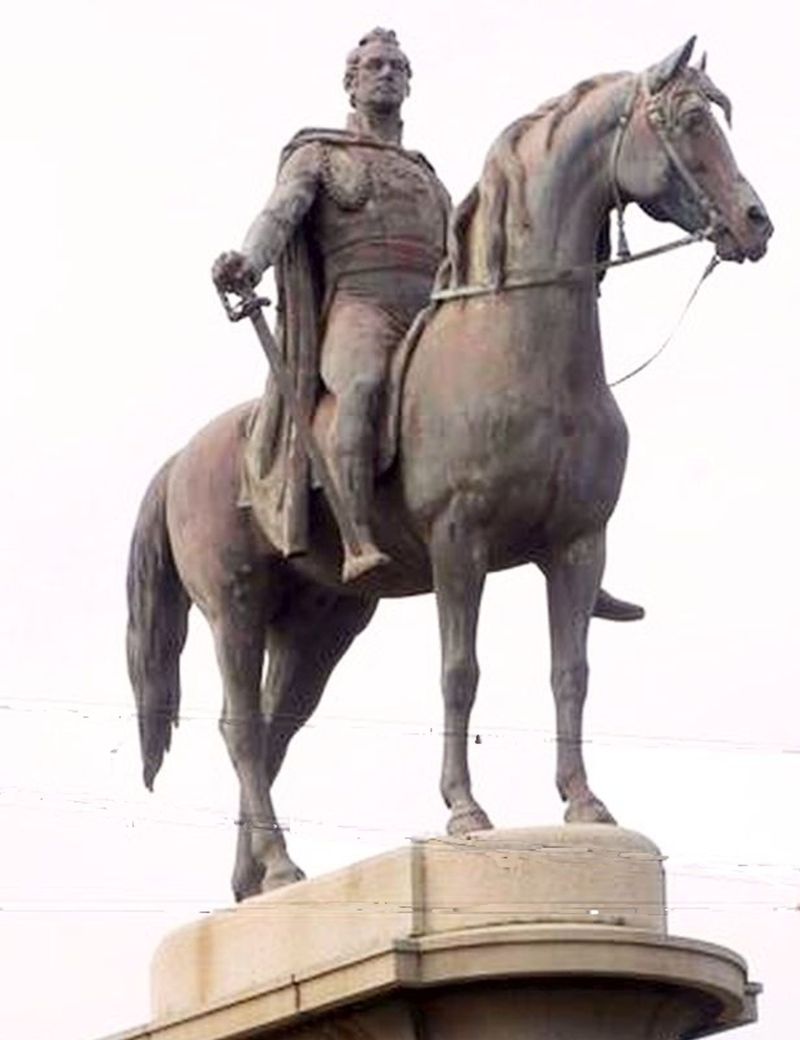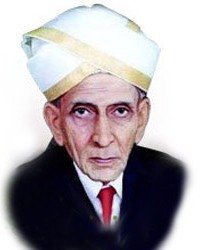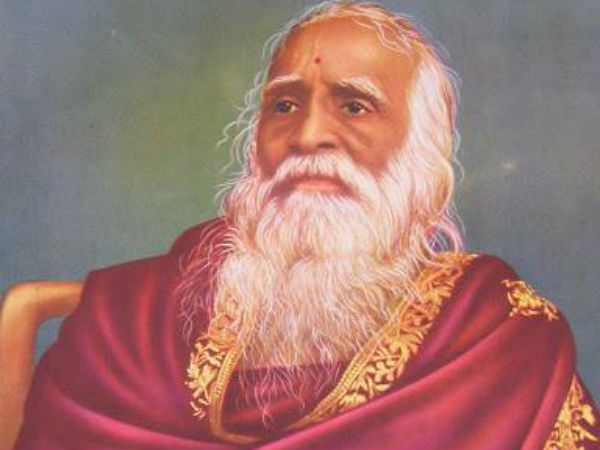As suggested by @BurgerrB let me tweet a little about the significance of Rajyotsava, with special focus on Bombay Karnataka as I come from Uttara Kannada district which used to be part of Bombay Presidency.
First, look this map to see how Karnataka was peiced together.
First, look this map to see how Karnataka was peiced together.
One of the early demands for unification of Kannada speaking areas was by the Bellary Collecto, Sir Thomas Munro (later governor of Madras) though of course his motivation was to limit Maratha influence as part of their wars with the Peshwas.
This guy
This guy
Whatever his intention, his advice was not heeded by the East India Company and 4 Kannada speaking districts would become part of Bombay Presidency.
Belgaum, Dharwad, North Canara, Bijapur.
Belgaum, Dharwad, North Canara, Bijapur.
Naturally administration and education were in Marathi in this period though some British administrators of Bombay - Walter Elliot, W.A. Russel and others encouraged some Kannada in this period.
One person who made leaps in changing this is Deputy Channabasappa who was the principal of "Normal School" in Belgaum. He later became the deputy inspector of education (hence the name) and made arrangements for teaching Kannada in schools in the area.
Then in 1890, another deputy education officer RH Deshpande, started the Karnataka Vidhyavardhaka Sangha primarily to develop resource material in Kannada and translate work into Kannada.
This institution would also expand into other activities, including setting up schools, and become one of the hubs of the Karnataka Ekikarana movement later.
Some of you might have studied in their schools.
Some of you might have studied in their schools.
Then in 1915, with the support of the Diwan of Mysore, Sir M. Vishweshwaraya the Kannada Sahitya Parishad was established which included representatives from all Kannada speaking areas, including areas outside Mysore Kingdom.
Look at that jari petha
Look at that jari petha
These efforts had given rise to a Kannada consciousness in these Bombay Karnataka areas and when Tilak campaigned for the Home Rule movement in these areas, he agreed that the campaign here should be in Kannada.
Bijapur born Alur Venkata Rao, who was close to Tilak, but yet known to have chastised him into giving due importance to Kannada in the movement, is perhaps the most important figure here.
He started a newspaper, Jaya Karnataka, to propagate Karnataka Statehood.
He started a newspaper, Jaya Karnataka, to propagate Karnataka Statehood.
The people who were active in this movement by then also made a strong demand to Montagu, who was touring India to gather inputs for what would become the Montagu-Chelmsford reforms in 1919.
Then Karnataka Province Congress Committee was formed in 1920 and by the time of the Congress session in Belgaum (The only Congress session chaired by Mahatma Gandhi) Karnataka Ekikarana Sabhe transformed into a more permanent Karnataka Ekikarana Parishat.
The Congress also took note of this demand in a more institutionalized manner by now. The demand was endorsed by (Motilal) Nehru Committee in 1928.
Karnataka Ekikarana Parishats were conducted in various places regularly. A major one in the 1940s, known as the Mumbai Mahasabhe which was headed by Kannadigas who were ministers in the governments Bombay Presidency, Madras Presidency, Mysore and Hyderabad respectively.
The main sluggishness in steps towards unification was perceived as coming from the Mysore Kingdom. Hence some leaders in the Mumbai Mahasabhe said unification will happen "With Mysore if Possible, without Mysore if necessary".
This made it a mainstream demand and from 1946, there was a concerted effort. Resolutions were passed in the Provincial Legislative Assemblies of Bombay and Madras in support.
But then when the dream started becoming real, various internal disputes started coming to the fore. Should the capital be Bengalur or Dharwad? Or should a new one be made at Hampi? Some castes also apprehended loss of demographic dominance.
Immediately after independence leaders such as Nehru, Acharya Kripalani, Rajagopalachari were not in favour of linguistic states. Rajendra Prasad and Vallabhbhai Patel were in favour. But the pressure from Andhra and Karnataka made it impossible to ignore the demands.
Three committees later, (Dhar, Jawaharlal-Vallabbhai-Pattabhi Sitaramayya a.k.a., JVP committee and the States Reorganization Commission headed by Justice Fazal Ali) the States Reorganization Act, 1956 was passed.
Of course there's more that went on than can be described in a twitter thread. But what is crucial to note is that unification of the state was a hard fought political demand for which many people spent many years.
That's why Rajyotsava is emotional in Bombay Karnataka.
That's why Rajyotsava is emotional in Bombay Karnataka.
And that's why its specially significant that the Rajyotsava anthem is set in Hubli

 Read on Twitter
Read on Twitter


